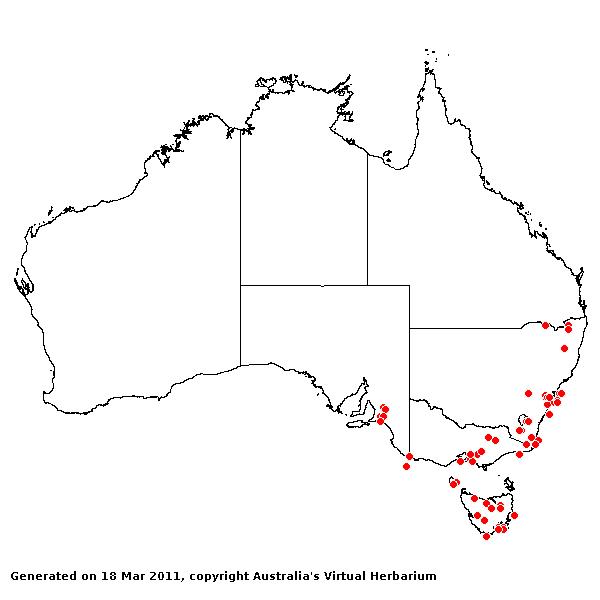Agrostis gigantea* Roth. Tent. Fl.
Germ. 1: 31 (1788).
Classification. (GPWG 2001) : Subfamily Pooideae.
Tribe Poeae.
Common name:
Black or Redtop Bent, Bent Grass, Creeping Bent-grass.
Type of Basionym or
Protologue Information: Germany, Bremen: Roth.
Recent synonyms:
Agrostis stolonifera L. var. ramosa (Gray) Veldkamp.
Key references
(books and floras): [1810]. R.Brown, Prodromus (170 as A.
parviflora), [1952] C.A.Gardner, Flora of Western Australia 1 Gramineae
(155), [2002] D.Sharp & B.K.Simon, AusGrass, Grasses of Australia,
[2006] J.Jessop, G.R.M.Dashorst, F.M.James, Grasses of South Australia
(184), [2008] S.W.L.Jacobs, R.D.B.Walley & D.J.B.Wheeler, Grasses of New
South Wales (109), [2009] A.Wilson (ed.). Flora of Australia, Vol
44A. Poaceae 2 (167).
Illustrations:
[2006] J.Jessop, G.R.M.Dashorst, F.M.James, Grasses of South Australia (184, fig. 132), [2008] S.W.L.Jacobs,
R.D.B.Whalley & D.J.B.Wheeler, Grasses of New South Wales, 4th edn
(109).
Derivation:
from the Latin giganteus (very large), presumably for the genus.
Habit.
Perennial. Rhizomes present, elongated. Culms geniculately ascending or
decumbent, 40–150 cm tall, 3–6 -noded. Leaf-sheaths smooth or scaberulous.
Ligule an eciliate membrane, 1.5–6 mm long, erose or lacerate, truncate or
obtuse. Leaf-blades flat, 5–20 cm long, 1–6(–8) mm wide. Leaf-blade surface
scaberulous.
Inflorescence.
Inflorescence compound, a panicle. Panicle oblong to ovate, effuse, 8–30 cm
long, 3–15 cm wide.
Spikelets.
Spikelets pedicelled. Fertile spikelets 1-flowered, comprising 1 fertile floret(s),
without rachilla extension, lanceolate or oblong, laterally compressed, 2–3 mm
long.
Glumes. Glumes
similar, firmer than fertile lemma, shiny. Lower glume lanceolate, membranous,
keeled, 1-keeled, 1 -nerved. Upper glume lanceolate, membranous, keeled,
1-keeled, 1 -nerved.
Florets.
Fertile lemma 1.3–2.3 mm long, without keel, 3–5 -nerved. Lemma surface
glabrous. Lemma apex entire or dentate, muticous or mucronate or awned. Median
(principal) awn dorsal. Palea 2 -nerved. Palea apex dentate. Lodicules present.
Anthers 3.
Continental
Distribution: Europe, Africa, Temperate Asia, Tropical Asia, Australasia,
North America, South America, and Antarctica.
Australian
Distribution: Western Australia, South Australia, Queensland, New South
Wales, Victoria, Tasmania, Lord Howe.
Western Australia:
Menzies, Warren. South Australia: Northern Lofty, Southern Lofty,
South-eastern. Queensland: Darling Downs. New South Wales:
Central Coast, South Coast, Northern Tablelands, Central Tablelands, Southern
Tablelands. Victoria: Gippsland Plain, Snowfields. Tasmania: King
Island, West Coast, East Coast.
Notes. Introduced.
Throughout Australia except the N.T., also occurring on Lord Howe Is. Native of
Europe and temperate Asia. Grows near water, a weed of pasture and roadsides in
lowland areas. Flowers Dec.-Feb.



